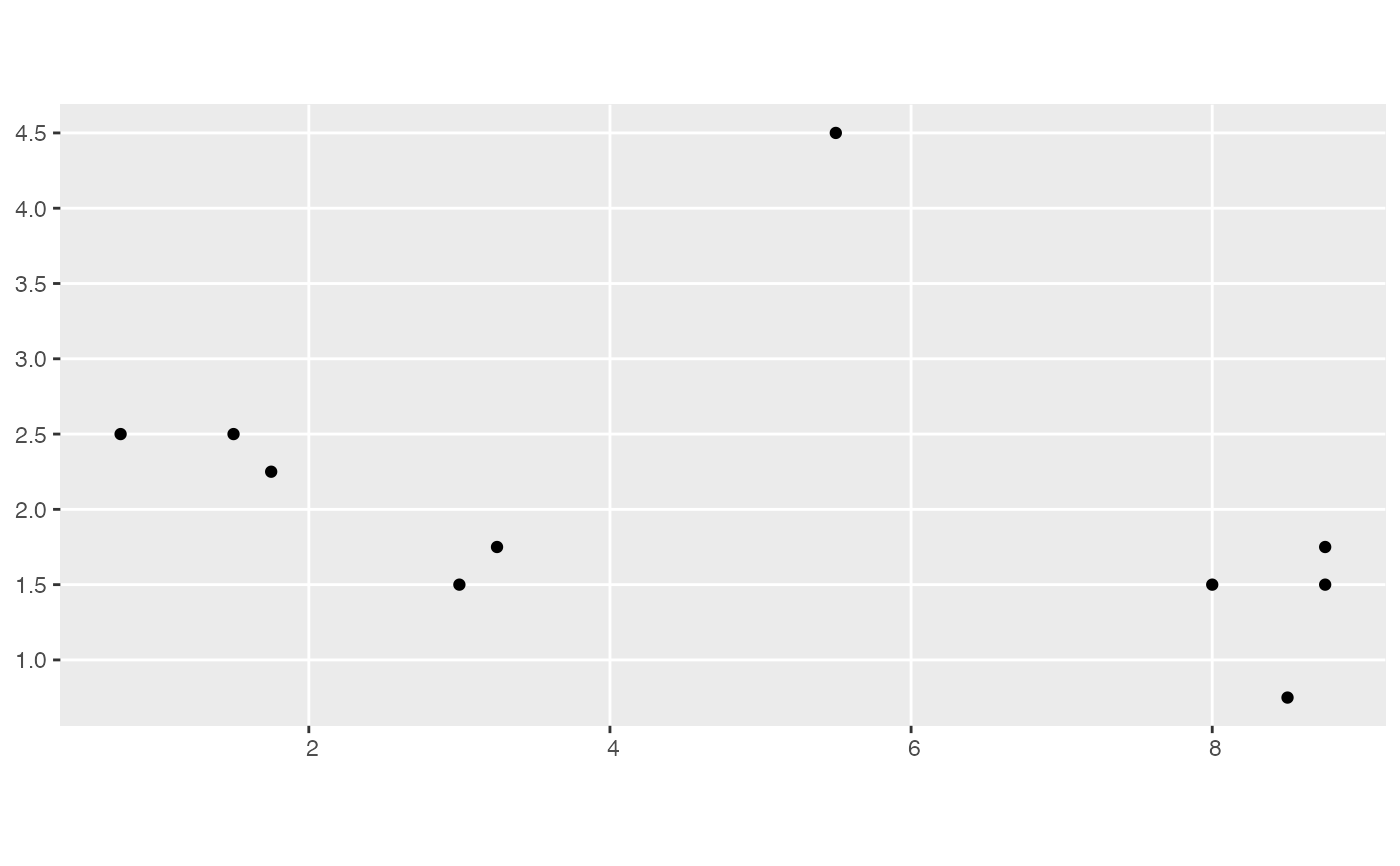This is an example growth data frame formed from two census data frames. In this case it is made by combining census_1_ex and census_2_ex. The individuals alive in both censuses were linked by their tree ID.
growth_ex
Format
A sf spatial tibble
- ID
Tree identification number. This identifies an individual tree and can be used to connect trees between the two censuses.
- sp
Species of the individual
- codes1
Code for additional information on the stem during the first census: M means the main stem of the individual tree and R means the stem was lost, but the tag was moved to another stem greater than DBH cutoff, this stands for resprout.
- dbh1
Diameter at breast height of the tree in cm at the first census
- dbh2
Diameter at breast height of the tree in cm at the second census
- growth
Average annual growth between the two censuses in cm per year
- codes2
Codes at the second census
- geometry
Point location of the individual
See also
Other example data objects:
blocks_ex,
census_1_ex,
census_2008_bw,
census_2014_bw,
census_2_ex,
comp_bayes_lm_ex,
focal_vs_comp_ex,
growth_spatial_ex,
growth_toy,
species_bw,
study_region_bw,
study_region_ex
Examples
library(ggplot2) library(dplyr) library(sf) library(sfheaders) library(blockCV) growth_ex %>% ggplot() + geom_sf()#> Simple feature collection with 2 features and 2 fields #> Geometry type: MULTIPOINT #> Dimension: XY #> Bounding box: xmin: 0.75 ymin: 0.75 xmax: 8.75 ymax: 4.5 #> CRS: NA #> # A tibble: 2 × 3 #> sp `mean(growth)` geometry #> <fct> <dbl> <MULTIPOINT> #> 1 american_beech NA ((1.5 2.5), (3 1.5), (5.5 4.5), (8.5 0.75), (8.… #> 2 sugar_maple 0.920 ((0.75 2.5), (1.75 2.25), (3.25 1.75), (8 1.5),…# Add buffer growth_spatial_ex <- growth_ex %>% add_buffer_variable(direction = "in", size = 1, region = study_region_ex) # Add cross-validation folds fold1 <- rbind(c(0, 0), c(5, 0), c(5, 5), c(0, 5), c(0, 0)) fold2 <- rbind(c(5, 0), c(10, 0), c(10, 5), c(5, 5), c(5, 0)) blocks <- bind_rows( sf_polygon(fold1), sf_polygon(fold2) ) %>% mutate(foldID = c(1, 2)) SpatialBlock_ex <- spatialBlock( speciesData = growth_ex, verbose = FALSE, k = 2, selection = "systematic", blocks = blocks )

